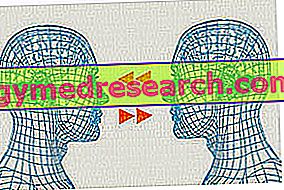By Dr. Alessio Dini
Mirror neurons are a type of neurons whose existence was first detected in the mid-1990s by Giacomo Rizzolatti and colleagues at the Department of Neuroscience of the University of Parma. Discovered in macaques, the researchers observed that some groups of neurons activated not only when the animals performed a certain action, but also when they observed another subject performing the same action.

The function of mirror neurons has been the subject of many hypotheses: these neurons can be important for understanding the actions of other people, therefore for learning through imitation.
Mirror neurons allow us to explain physiologically man's ability to relate to other individuals; in our brain, observing a certain action, the same neurons are activated that come into play when we are doing it; in this way we can easily understand the actions of our fellows (comparative system with similar actions performed in the past). This clarification is very important, in fact it would seem that the mirror neuron takes action only when the subject observes a behavior that he himself put in place previously.
The recognition of the emotions themselves is based on this "mirror mechanism". It has been shown experimentally that when we observe in others a manifestation of pain the same neuronal substrate is activated, connected to the perception of the same type of emotion in the first person (we therefore perceive the same emotion).
Other confirmations come from clinical studies on patients suffering from neurological diseases: once the ability to experience an emotion is lost, it is no longer able to recognize it when it is expressed by others.
Experimental evidence seems to indicate that the understanding of language, in some respects, may depend on mechanisms of this type; according to some hypotheses, human language has evolved through information transmitted with gestures and finally the mirror system has been able to understand and encode / decode this information.
By now it is certain that this system has all the potential needed to provide a mechanism for understanding actions and for learning through the imitation and simulation of the behavior of others.
The functioning of mirror neurons can offer a biological explanation for some forms of autism, since the experiments conducted seem to indicate a reduced functioning of this type of neurons in autistic children. The latter probably do not understand the meaning of the gestures and actions of others (they do not understand the common emotions expressed by the face and attitudes of those around them).
Let's think about children's learning (the way we walk, talk, eat etc.): they learn by looking at the adult and imitating him. Imitations, and therefore external stimuli, are the basis of our development, without them our brain becomes "paralyzed".
All this therefore makes us understand that there is a natural, biological mechanism that connects us, that makes us feel good or less with others.



